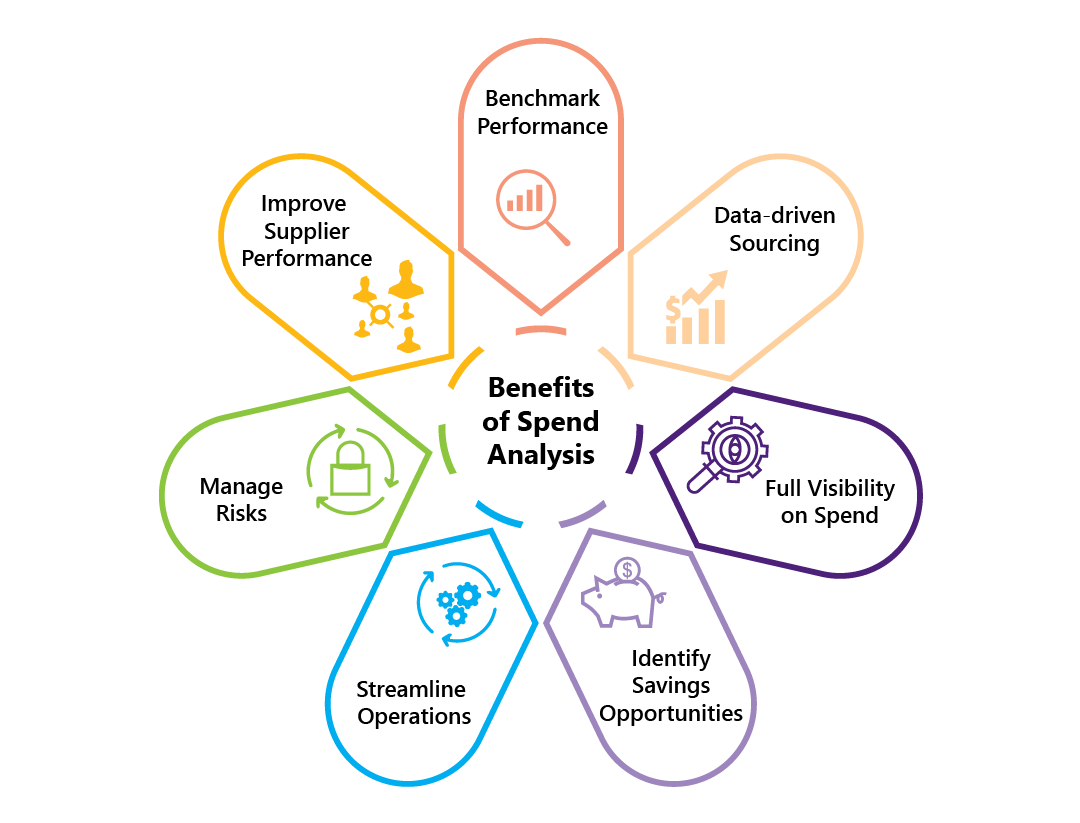Home > Blogs > The new era of Procurement – Intelligent Spend Analysis
The new era of Procurement – Intelligent Spend Analysis

Procurement is often defined as a series of activities and processes designed for efficient acquisition of products and services necessary for regular business functioning. It can involve functions such as selection of suppliers, negotiation and management of contracts, establishing payment conditions, actual acquisition of the products and much more.
In other words, procurement is the umbrella term for a multitude of cost and core business functions, qualifying to be considered as a part of an enterprise’s corporate strategy. Since an organization can end up spending well over half of its income on buying products and services, it is essential to manage adequate procurement. Even the slightest reduction in buying expenses can have a significant direct effect on earnings, while a shortage of strategic choices can cause a financially healthy business to sink.
Spend Analysis – The foundation of procurement’s performance
The costs incurred by an organization are often termed as inevitable by most procurement managers. Most often, they aren’t able to gauge which expenses are avoidable and which ones are contributing to the organization’s success. This is why procurement managers often rely on spend analysis. It helps increase procurement efficiency and cost savings opportunity by collecting, classifying and analyzing the spend data.
Most enterprises today are using spend analysis as a catalyst to improve efficiency, reduce maverick spend and achieve cost savings.
Spend analysis, simply put, is a process, which involves analysis of the enterprise purchases and invoices, in an effort to find opportunities to curb maverick and unmanaged spend. In turn, it provides insights to better supplier negotiations, compliance adherence and better sense of the demand and pricing.
Procurement organizations worldwide use spend analysis tools to proactively define savings possibilities, handle risks and optimize the purchasing power of the organization. It is often considered the basis of sourcing. Spend Analysis has the capacity to transform any organization’s data into a powerhouse of ideas and information that can be used to obtain Spend visibility.
Significance and Features of Spend Analysis
Spend visibility and analysis give procurement another chance to contribute to broader company goals. A thorough spend analysis can:
Benefits of Spend Analysis
Challenges in implementing Effective Spend Analysis
Spend Analysis is the process of collecting, cleansing, classifying and analyzing spend information through a dedicated software, provide complete visibility through spend analysis dashboards. Though it is a crucial part of a procurement strategy, implementing an effective spend analysis is not quite easy.
Confusion is often caused between direct and indirect spending. As far as metrics are concerned, procurement information can be categorized based on a number of Spend Analysis key performance indicators (KPIs) applicable to the procurement function.
Among most popular Spend Analysis KPIs are
However, procurement teams implementing a solution for spend analysis often have to overcome roadblocks before gaining more impact and spending with the instrument under leadership.
The four difficulties facing procurement agencies in adopting an efficient spend analysis are as follows:
Cognitive Procurement – Taking Spend Analysis to the next level.
Owing to the worldwide market dynamics and the need for organizations to reduce expenses without eliminating resources, there has been an increase in the use of Procurement Service Providers (PSPs). The use of Artificial Intelligence, particularly machine learning with its capability to self-learn enables existing systems to learn from the volumes of data without human intervention and detect potential issues and resolve them quickly.
By applying analysis to the millions of data points they already have, leaders today, are equipped with intelligent and informed business decisions which in turn is helping them increase cost savings, decrease operating costs, and reduce risk.
Today, leading procurement organizations are not merely measuring what they have spent but pushing their spend analysis definition to encompass their complete value contribution to the company, using both standard and newly available information sources to gain insights from true supply analysis.
Forecasting Insights
Predictive Spend analysis in procurement is still fairly new, but it is increasingly essential, especially in organizations that have already been through the process of spend analysis, leveraging suppliers, segmentation and consolidation. Prediction needs a thorough knowledge of the supply chain ecosystem’s technical and commercial characteristics, as well as sophisticated statistical and modeling capacities. This enables income forecasting, mitigating risk, identifying market opportunities, and much more. It is often constructed on a strategic platform that offers visibility of information and near-real-time accessibility as well as sophisticated data warehouses to collect appropriate third-party data sets. They can also provide an in-depth view of the operational outcomes of the supply chain that are not readily visible to business executives.
Key to this evolution is the rise of artificial intelligence within the company, which now helps procurement organizations obtain fresh perspectives and shape fresh policies with conventional spend analysis methods that are not feasible. Procurement leaders in the fields of Strategic Sourcing, Supply Management & Risk Management take their analytic approach to the next level with AI.
Conclusion
The journey towards procurement becoming a strategic function has just begun vis-a-vis its tactical past. In many aspects, successful procurement functioning has been rendered unattainable by historical flaws. But the gaps in Spend Analysis Services are starting to narrow with developments in machine learning and artificial intelligence, especially the power of deep learning. Accurate, real-time classification has become the new norm, and with previous offerings, prescriptive intelligence based on community-based benchmarks brings fresh perspectives to procurement that were once not feasible. Only in this manner will AI be able to assist address today’s most urgent, contemporary procurement problems.
As Magnus Bergfors, research director at Gartner puts it; “The first step to automating spend management is to make sure that existing tools are both fit for purpose and are used throughout the organization. Proper use of existing tools provides the platform for AI, as well as the data on which to train it. Application leaders should prioritize investment in solutions that support automation for spending categories that are not well-served by current systems.”
(Quote Source: https://www.gartner.com/smarterwithgartner/prepare-for-the-impact-of-ai-on-procurement/)



Procurement Insights Team
More blogs from Procurement Insights Team >